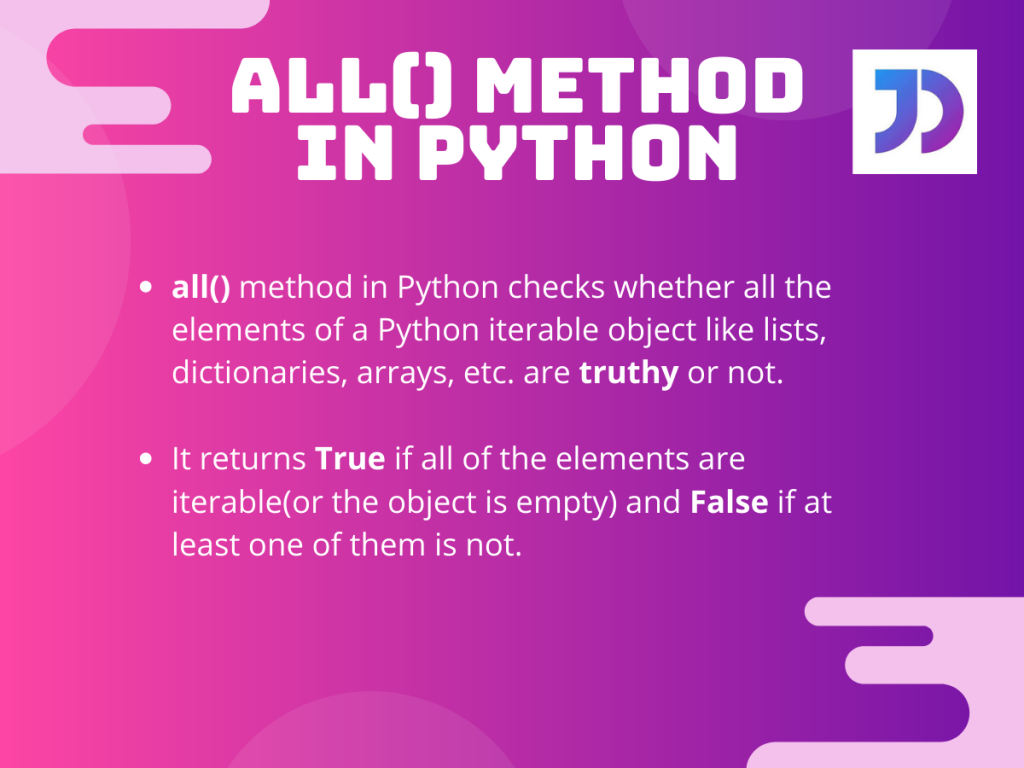Python comes with many interesting pre-defined methods. One of them is the all() method in Python. This method is widely used to check whether all the elements of an iterable Python object are truthy. So let us learn more about the all() method and also take a look at how we can incorporate in our code.
The Working of all() Method in Python
Theoretically, the all() method in Python checks whether all the elements of a Python iterable object like lists, dictionaries, arrays, etc. are truthy or not. It returns True if all of the elements are iterable( or the object is empty) and False if at least one of them is not.
Did you notice that we use the term “Truthy” and not “True”? This is because both the terms have different meanings.
In Python, all() checks for all the elements if bool(element) is true or not. In that way, we can infer that truthy is actually different than true here.
all() Function Usage And Examples
Now let’s take a look at an example that can illustrate the working of the all() method in Python.
#python all() example
print("all() in Python:")
#Defining different type of variables
list1=['J','o','u','r','n','a','l','D','e','v']
list2=[0,1,1,1,0]
dictionary1={1:"True",2:"False"}
dictionary2={0:"False",1:"True"}
tpl1=(0,1,2,3)
#Evaluating the variables with the all() method.
print("list1=['J','o','u','r','n','a','l','D','e','v']:",all(list1))
print("list2=[0,1,1,1,0]:",all(list2))
print("tpl1=(0,1,2,3):",all(tpl1))
print("dictionary1:",all(dictionary1))
print("dictionary2:",all(dictionary2))
# Testing all() method's evaluation of empty objects
print("Now for empty objects:")
dict_empt={}
list_empt=[]
print("dict_empt:",all(list_empt))
print("list_empt:",all(dict_empt))
Output:

- For list1,
all()returnsTrueas all of its elements are non-falsy, - Whereas, for list2 we got
Falsebecause it contains the number 0 which evaluates to false. - For tuple tpl1, also the method returns
Falsesince the first element is 0 which evaluates to false. - For dictionary1, we get
Trueas the output as none of the keys are 0 or false. For demonstration purposes, we added the “False” string which evaluates to TRUE since the false string is not a boolean FALSE. - We get a
Falsefor dictionary2 as one of its keys is 0. - For any kind of empty iterable object, be it list or dictionary, the
all()method returnsTrue.
